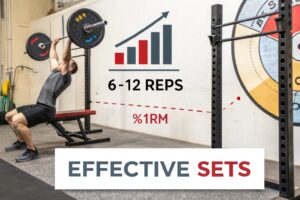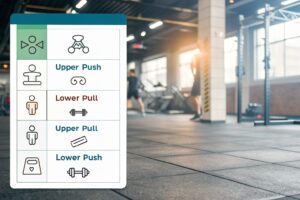Introduction:
Perfect Volume Formula for Hypertrophy
The quest for massive, lean muscle often leads lifters to wonder: how many reps and sets do I really need for optimal hypertrophy? The answer lies in the perfect volume formula – the science‑driven relationship between repetitions, sets, load, and frequency that fuels muscle growth. In this comprehensive guide, we’ll break down the math, the biology, and the practical programming tricks that transform simple “reps” into a hypertrophy‑maximising “set‑based” system.
Volume is simply the total work performed in a training session, typically calculated as sets × reps × load (weight). While many beginners chase higher rep ranges or more sets indiscriminately, research shows that there is a sweet spot where muscle protein synthesis (MPS) peaks and fatigue remains manageable. Understanding where that spot lies for you is the cornerstone of a sustainable hypertrophy program.
Modern training science also tells us that the “one‑size‑fits‑all” approach is outdated. Individual factors—training age, fiber‑type distribution, recovery capacity, and even nutrition—shift the optimal volume curve. By learning to read these signals and applying the perfect volume formula, you can systematically increase muscle cross‑sectional area while minimising overtraining risk.
Section 2: Why Training Volume Matters More Than You Think
Volume as the Primary Driver of Muscle Protein Synthesis
Muscle protein synthesis is a dose‑dependent response to mechanical tension. Studies consistently demonstrate that, after a single resistance‑training bout, MPS rises sharply for about 24‑48 hours. The magnitude of this rise correlates directly with the total work done – the higher the volume, the greater the anabolic stimulus—until a saturation point is reached where additional work yields diminishing returns.
The Diminishing‑Returns Threshold
For most intermediates, the sweet spot lands between 10–20 total effective sets per muscle group per week. Anything below this range under‑stimulates growth, while exceeding ~30 sets can amplify systemic fatigue, impair recovery, and eventually erode strength gains. Understanding this threshold lets you allocate sets intelligently across multiple exercises without over‑loading any single muscle.
Section 3: Decoding the Reps‑to‑Sets Relationship

The Classic 1‑RM Equation Revisited
Traditionally, trainers use the 1‑rep max (1RM) as the reference point to prescribe intensity. The equation Load = %1RM × 1RM works well for strength, but hypertrophy requires a more nuanced approach that also accounts for time‑under‑tension (TUT). By converting a target rep range into an “effective set” count, you can align intensity with volume for maximal growth.
Effective Sets: Bridging Reps and Fatigue
An effective set is defined as a set performed to technical failure (or very close to it) within a moderate rep range (6‑12). Research suggests that each effective set generates approximately the same anabolic signaling, regardless of whether you performed 6 reps with 80 % 1RM or 12 reps with 65 % 1RM. This principle lets you swap reps for sets while preserving the same growth stimulus.
Calculating Your Personal Volume Formula
The simplest formula is:
Total Weekly Volume (effective sets) = (Target Sets per Exercise) × (Number of Exercises per Muscle Group)
If you train chest twice a week with 3 exercises (bench press, incline dumbbell press, cable flyes) and aim for 10 effective sets per session, your weekly chest volume equals 3 exercises × 10 sets × 2 sessions = 60 effective sets. From there, you can modulate load, rep range, or rest periods while keeping the overall set count constant.
Section 4: Programming the Perfect Hypertrophy Volume
Choosing the Right Rep Range for Your Goals
While the effective‑set concept equalises different rep ranges, specific outcomes can still vary. Lower reps (4‑6) with heavier loads tend to preserve or increase maximal strength, while higher reps (12‑15) with lighter loads improve sarcoplasmic hypertrophy and muscular endurance. Mix both within a macro‑cycle to reap the benefits of each type of growth.
Periodisation Strategies That Respect Volume Caps
A practical periodisation model is the “Undulating Volume Cycle.” Week 1 focuses on high‑volume, moderate‑intensity (3 sets × 12 reps). Week 2 drops volume slightly but raises intensity (4 sets × 6 reps). Week 3 returns to a balanced mix (3 sets × 8‑10 reps). This wave‑like approach prevents chronic fatigue, keeps MPS elevated, and trains the nervous system across a spectrum of stimuli
Fine‑Tuning Frequency for Faster Adaptation
If you can recover well, increasing the training frequency (e.g., hitting each muscle twice or even three times per week) allows you to spread the same weekly set count into smaller, more frequent sessions. This reduces per‑session fatigue, improves technique quality, and leads to a higher rate of protein synthesis spikes throughout the week.
Section 5: Real‑World Application – Sample 4‑Day Hypertrophy Split

Day 1 – Upper‑Body Push (Chest, Shoulders, Triceps)
-
- Bench Press – 4 × 8 (effective sets)
-
- Incline Dumbbell Press – 3 × 10
-
- Standing Overhead Press – 3 × 8
-
- Lateral Raises – 2 × 12
-
- Triceps Rope Push‑Down – 3 × 12
Total effective sets for push muscles: ≈ 15 sets.
Day 2 – Lower‑Body Pull (Hamstrings, Glutes, Calves)
-
- Romanian Deadlift – 4 × 8
-
- Leg Curl Machine – 3 × 12
-
- Hip Thrust – 3 × 10
-
- Standing Calf Raise – 4 × 12
Total effective sets for posterior chain: ≈ 14 sets.
Day 3 – Upper‑Body Pull (Back, Biceps)
-
- Pull‑Ups (weighted if possible) – 4 × 6‑8
-
- Barbell Row – 4 × 8
-
- Seated Cable Row – 3 × 10
-
- Face Pulls – 2 × 15
-
- Barbell Curl – 3 × 10
Total effective sets for pulling muscles: ≈ 16 sets.
Day 4 – Lower‑Body Push (Quads, Glutes)
-
- Back Squat – 4 × 8
-
- Leg Press – 3 × 12
-
- Bulgarian Split Squat – 3 × 10 each leg
-
- Abductor Machine – 2 × 15
Total effective sets for quad‑dominant work: ≈ 12 sets.
Across the week, each major muscle group receives 30‑35 effective sets, sitting comfortably within the 10‑20 sets per session and 30‑45 sets per week hypertrophy window. Adjust load, rest (60‑90 seconds), and progression (add 2.5‑5 lb or an extra rep each week) to keep the stimulus climbing.
Section 6: Tracking, Adjusting, and Troubleshooting Your Volume
Metrics That Matter
Use a simple spreadsheet to log: exercise, load, reps, sets, and perceived effort (RPE). Calculate weekly volume per muscle group and compare it to your target range. If you notice plateaus, look for trends—perhaps volume has crept above 45 sets per week, or RPE is consistently > 8, indicating insufficient recovery.
When to Increase Volume
If you’re consistently hitting RPE ≤ 6 in the last set of each exercise and recovery feels effortless, add 1–2 effective sets per muscle group the following week. Progression can also be achieved by increasing load (2.5‑5 lb) or extending the rep range by 1‑2 reps while staying in the same intensity bracket.
When to De‑load or Reduce Volume
Signs of overreaching include chronic soreness, reduced performance, elevated resting heart rate, or poor sleep. In such cases, cut the weekly effective set count by 10‑20 % for a week (deload) or replace a heavy day with a light, high‑rep session (e.g., 3 × 15 with 50 % 1RM). This “active recovery” helps reset the volume‑fatigue balance without losing momentum.
By mastering the perfect volume formula for hypertrophy, you turn the abstract numbers of reps and sets into a precise, science‑backed recipe for muscle growth. Apply the guidelines above, track your data, and adapt intelligently—your muscles will thank you with size, strength, and definition that stand out on any stage.



